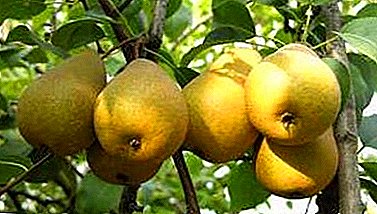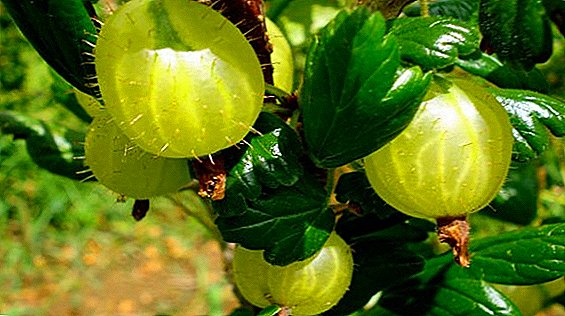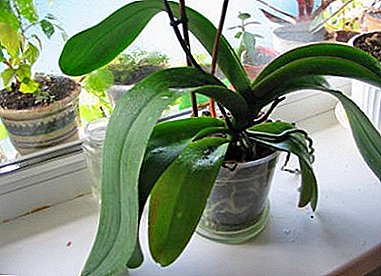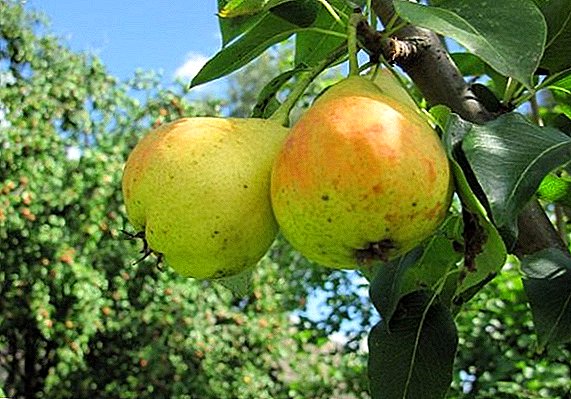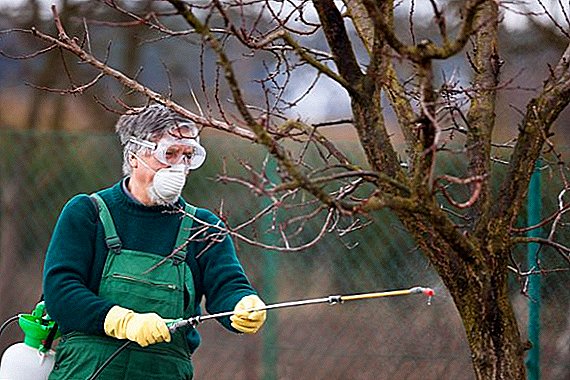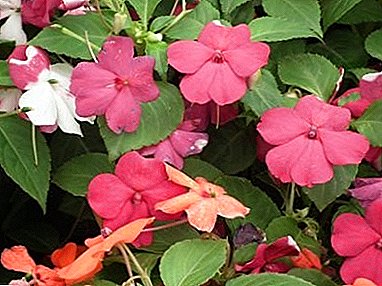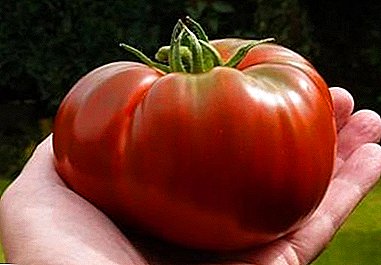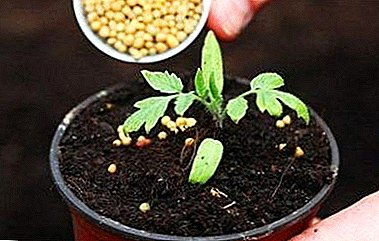
Many lovers of everything environmentally friendly prefer their own home-grown tomatoes to their purchased tomatoes, grown on a garden bed or, in a metropolis, on a windowsill, balcony. It is worth noting right away that this is a really feasible desire, one has only to make an effort.
And you should start with the purchase of seeds, their sowing, growing seedlings - although these stages are laborious, the gardener will receive a decent reward in the form of fragrant, tasty, juicy tomatoes on his table. In the article we will look at how to feed the seedlings, if they are thin, in order to grow better.
Features of tomato sprouts
The need for fertilizers
Strong and healthy seedlings are the basis of the future good harvest. It should be with thick and resistant stems, green succulent leaves and have a healthy appearance.
At the seedling stage, tomatoes are the most vulnerable, how to grow it? Without top dressing to which saplings perfectly react, not to manage. Top dressing should be done regularly, as this culture consumes a large amount of nutrients during its development. As for the number of dressings, gardeners with great experience say: there should be three or five of them, regardless of the quality of the soil. More about why you need to feed the tomatoes and when you need to do it the first time, read here, and when and how to fertilize the seedlings, we told here.
Important! Before making the dressing, seedlings should be poured abundantly with settled water at room temperature. The preferred time of day is morning. It is preferable to loosen the soil for better penetration of nutrients to the root system, but this should be done very carefully.
Signs of tomatoes, indicating the need for fertilizer:
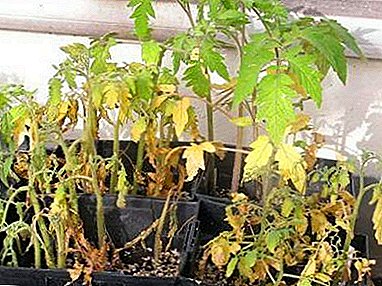 The color of the seedling leaves from a rich green becomes pale green - this factor indicates a lack of nitrogen, and, conversely, if the foliage is extremely bright, oily, then the nitrogen enters the plants in greater than necessary quantities.
The color of the seedling leaves from a rich green becomes pale green - this factor indicates a lack of nitrogen, and, conversely, if the foliage is extremely bright, oily, then the nitrogen enters the plants in greater than necessary quantities.- The leaves turn yellow and fall off - a sure sign of an overabundance of phosphorus in the soil, but if the foliage acquires a purple hue or turns inwards, then you can safely talk about its lack.
- Leaves turn yellow also from iron deficiency.
- I will react to the lack of nitrogen and potassium by twisting the leaves.
- A sapling withers - it lacks nitrogen, becomes covered with dull spots - this mineral is more than required.
- Pale leaves with a greenish-blue shade in combination with a weak stem indicates a lack of copper.
- When the growing point dies off and a large number of stepchildren form, the seedling lacks boron.
- Brown spots on the lower leaves signal a lack of magnesium.
Three vital minerals for normal plant development and future high fruiting - nitrogen, phosphorus, potassium.
What funds are needed?
Gardeners, especially beginners, often ask themselves: "How can we feed seedlings to grow, if they are at home on the window? How often do this? When to fertilize tomatoes and how many do they need?". Below is a list of some of the best fertilizers among vegetable growers for tomato seedlings.
Banana peel
A natural top dressing for tomatoes is a banana peel. Bananas and their skin are rich in potassium, and they contain some phosphorus. For long-term transportation, their shell is treated with substances containing, within acceptable limits, growth hormones, which fruitfully affects the development of seedlings.
Recommendation. Before eating bananas for food, and preparing fertilizer from the peel, they should be washed with running running water and soap.
Fresh banana skins are recommended to be added to the bottom of the container when picking up tomato seedlings. Some summer residents of the rind of this fruit are dried, crushed and mixed with the ground when sowing seeds (you can use dry peel and whole, but in this case it should be laid on the very bottom of the container for seedlings).
Others - insist the skins of bananas in water (the peel of 2 - 3 bananas is poured with 3 liters of water and infused for 3 days, then diluted with water in a 1: 1 ratio) and the infusion, which turned 1.5 months, is added with this infusion.
Details on how to use banana skins and other organic matter for feeding and proper growth of tomatoes, read here.
Sleeping coffee
Coffee contains a large amount of nutrients and minerals. (including nitrogen, potassium, magnesium), moreover, it makes the soil structure more friable, saturating the fragile root system of sprouts with oxygen. For feeding the seedlings use the brewed thick, mixing it with the ground until the seeds are sown. Coffee cake washed, dried, mixed with the soil in a 1: 1 ratio.
Urea (carbamide)
 Urea is the basis for fertilizing tomato seedlings, as it contains up to 46% nitrogen, a mineral, without which normal growth and high fruiting are impossible. But the issue of feeding with nitrogen must be approached very carefully.
Urea is the basis for fertilizing tomato seedlings, as it contains up to 46% nitrogen, a mineral, without which normal growth and high fruiting are impossible. But the issue of feeding with nitrogen must be approached very carefully.
In all you need to know the measure: it is better to underfedge the seedlings than to overfeed. Excess nutrients for her no less disastrous than their lack.
Many agronomists recommend urea to make even before planting seedlings in the ground (1 -2 g per box). Then, urea is watered by seedlings aged from 15 to 30 days and already planted in the soil (25-30 granules per 10 liters of water at room temperature), until the start of the first ovary.
Eggshell
It is rich in calcium, silicon, phosphorus, potassium, which, of course, has a positive effect on the growth of seedlings. Dried shells from 3 to 4 eggs (preferably raw) are soaked in 3 liters of water for 3 days.
Another option:
- The shell from 4 eggs, previously washed and dried, is ground in a coffee grinder, 1 liter of boiling water is poured and infused for 4-6 days, then the infusion is diluted in 10 l of water.
- The resulting suspension is added to the roots of seedlings.
Yeast
In the people not without reason there is a phrase: "It grows by leaps and bounds." This substance, unique in its composition, is a source of natural bacteria that help to strengthen the immunity of seedlings. They are an excellent and inexpensive stimulator of tomato growth.
- 10 g of "live" yeast dissolved in warm water, add 4 tbsp. Sahara.
- The resulting concentrate is diluted with water (1:10) and poured under the roots of tomatoes during the first feeding.
Another option: 5 g of bread yeast diluted in 5 liters of water, insist for 1 day, and then you can add seedlings. Yeast should be used for tomato seedlings that are 1–2 months old.
From the video you will learn how to make dressing with yeast for an excellent harvest:
Epin
This drug is a stimulator of the growth of seedlings, it is a kind of plant hormone. The active substance is a solution of ebiprassinolide in alcohol of 0.025 g / l., It contains shampoo, which gives foam, to better “stick” useful substances to the foliage. The main purpose of Appin - strengthening the immunity of tomato sprouts, contributing to the rapid rooting of seedlings.
Epin strengthens the defenses of the plant (cold, drought, diseases, pests), but does not fertilize it!
This drug can be used at any stage of plant growth: they can process seeds, spray seedlings, and then - during flowering and fruiting. When preparing the spray solution, follow the instructions strictly. As a rule, the vial of the substance is diluted in filtered water and stored for no more than 24 hours. For seedlings of the phase "2 - 4 leaflets" the rate of consumption is 1 ampoule per 1 liter of water, while picking 3 drops per 100 ml of water.
Beer
Beer solution is considered a good seed growth biostimulator. It is used most often in the phase of appearance of the first leaf. It is preferable to feed "live" beer (1 l per 10 l of water), avoiding the ingress of tender leaves of sprouts. The seedlings grown in such a way will be stronger, more resistant to diseases, it will be easier to endure picking and transplanting.
What and how to feed the seedlings on the windowsill at home?
 Seedlings of tomatoes on the windowsill also need feeding. What kind of fertilizer to feed in this case? Experienced agronomists talk about the benefits of fertilizer with a universal preparation: a handful of wood ash is mixed with 10 liters of water, and 3 tbsp of mullein or Vermicide is added to the same place. After thorough mixing, add this suspension to the plant roots. More about using ash to feed tomato seedlings at home, read here.
Seedlings of tomatoes on the windowsill also need feeding. What kind of fertilizer to feed in this case? Experienced agronomists talk about the benefits of fertilizer with a universal preparation: a handful of wood ash is mixed with 10 liters of water, and 3 tbsp of mullein or Vermicide is added to the same place. After thorough mixing, add this suspension to the plant roots. More about using ash to feed tomato seedlings at home, read here.
When growing seedlings on a windowsill, the first top dressing is recommended after the appearance of 2-3 true leaves, the second and third - in 10-12 days, the last 5-7 days before planting in the ground.
When choosing a drug for feeding you should also be guided by the appearance of the plant. The result of the possible shortage of certain mineral substances was mentioned above, and it will help to fill them:
- Korovyak with a shortage of nitrogen (1 l per 10 l of water). An adult plant is watered with 0.5 liters of solution, and for seedlings the dose is reduced.
- Calcium nitrate (20 g per 10 l of water) will help to compensate for the lack of calcium in addition to the above-mentioned folk feeding methods.
- Iron deficiency will help eliminate spraying of seedlings with 0, 25% solution of ferrous sulphate.
- Do young tomato saplings lack phosphorus? This disadvantage eliminates superphosphate spraying. 20 tbsp. granules are poured 3 liters of boiling water, the container is transferred to a warm place for a day. 150 ml of the obtained liquid is diluted in 10 liters of water, while adding 20 ml of any nitrogenous fertilizer (see the types of phosphate fertilizers for tomatoes in this article).
- Potassium sulfate (15 g per 10 l of water) is essential when there is a shortage of potassium.
- The lack of copper will help compensate for the solution of copper sulfate (1 - 2 g per 10 liters of water).
- If you dissolve 5 g of boric acid in 10 liters of water, you can get rid of the lack of boron.
- 1. hl magnesium nitrate in 10 liters of water neutralizes the symptoms characteristic of the lack of this trace element.
What to add to the stalks were plump?
How to feed the seedlings without chemistry, so that the stems were plump? A similar question is asked by many novice gardeners. In addition to all of the above methods, experienced agronomists can tell you what fertilizers still provide: every two weeks should be fed iodine seedlings. 5-6 drops of iodine dissolve in 10 liters of water, you need to add liquid under the roots, avoiding contact with the leaves, no more than once a week. It will be enough to produce one root and one leaf feeding in this way. For foliar application, 1 drop of iodine is usually mixed with 2 liters of warm water and 0.5 glasses of serum.
Do not forget about the drugs sold in specialized stores that are universal: they combine all the mineral elements, nutrients and even organic components necessary for seedlings of tomatoes.
The most popular of them in the domestic market are Nitrofoska, Vermicofe, Kristalon. Dosage and administration are indicated in the instructions.
In detail about the features of the finished dressings, the pros and cons of using them, we told in this article.
General rules of care
- Observance of temperature. Excessively high and excessively low temperatures are harmful to seedlings. The optimal temperature is + 20С - + 25С in the daytime and + 18С at night.
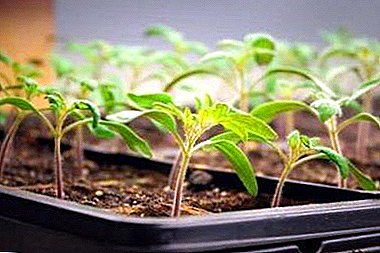 Lighting. The duration of daylight hours for seedlings should not be less than in summer. When planting seedlings in February, you must remember that you have to purchase a special fitolamp. It can give different intensities of light - this is an important condition for growing seedlings at different stages. All the nuances on this issue are set out in the instructions for the lamp.
Lighting. The duration of daylight hours for seedlings should not be less than in summer. When planting seedlings in February, you must remember that you have to purchase a special fitolamp. It can give different intensities of light - this is an important condition for growing seedlings at different stages. All the nuances on this issue are set out in the instructions for the lamp.- Dives are usually made at the stage of "1-2 true leaves". The "older" the sapling, the more difficult it will survive this process. After the seedlings should not be watered for 5 to 6 days, so that the plant can take root.
- "Hardening" seedlings. For 1 - 2 weeks before planting the seedlings into the soil, you need to open the windows on which the boxes with the future tomatoes are placed for a couple of hours. Gradually, the "ventilation" time should be increased to 6 to 8 hours, and for 3 to 5 days, tanks should be carried out to the open air in quiet, windless weather.
Watering
Tomatoes - a culture that requires moderation in all, including when watering. It is not necessary to overdry or fill in seedlings, it is enough that the soil is always slightly moist. Before the emergence of seedlings from tomato seeds, the top layer of soil is irrigated from a sprayer, after the appearance of 2 - 3 leaves on the shoots, in order to stimulate the development of the root system, watering from below (in the pan) is practiced. Water must be separated or filtered, not less than +20 C.
Cultivation of tomato seedlings is a troublesome, but at the same time, grateful: tasting juicy and tasty tomatoes from your garden, anyone will be glad that these fruits are completely his handiwork. And such a variety of fertilizers for tomatoes and methods of their use are guaranteed to provide both the novice summer resident and the agronomist with a wise experience and a rich harvest.


 The color of the seedling leaves from a rich green becomes pale green - this factor indicates a lack of nitrogen, and, conversely, if the foliage is extremely bright, oily, then the nitrogen enters the plants in greater than necessary quantities.
The color of the seedling leaves from a rich green becomes pale green - this factor indicates a lack of nitrogen, and, conversely, if the foliage is extremely bright, oily, then the nitrogen enters the plants in greater than necessary quantities. Lighting. The duration of daylight hours for seedlings should not be less than in summer. When planting seedlings in February, you must remember that you have to purchase a special fitolamp. It can give different intensities of light - this is an important condition for growing seedlings at different stages. All the nuances on this issue are set out in the instructions for the lamp.
Lighting. The duration of daylight hours for seedlings should not be less than in summer. When planting seedlings in February, you must remember that you have to purchase a special fitolamp. It can give different intensities of light - this is an important condition for growing seedlings at different stages. All the nuances on this issue are set out in the instructions for the lamp.